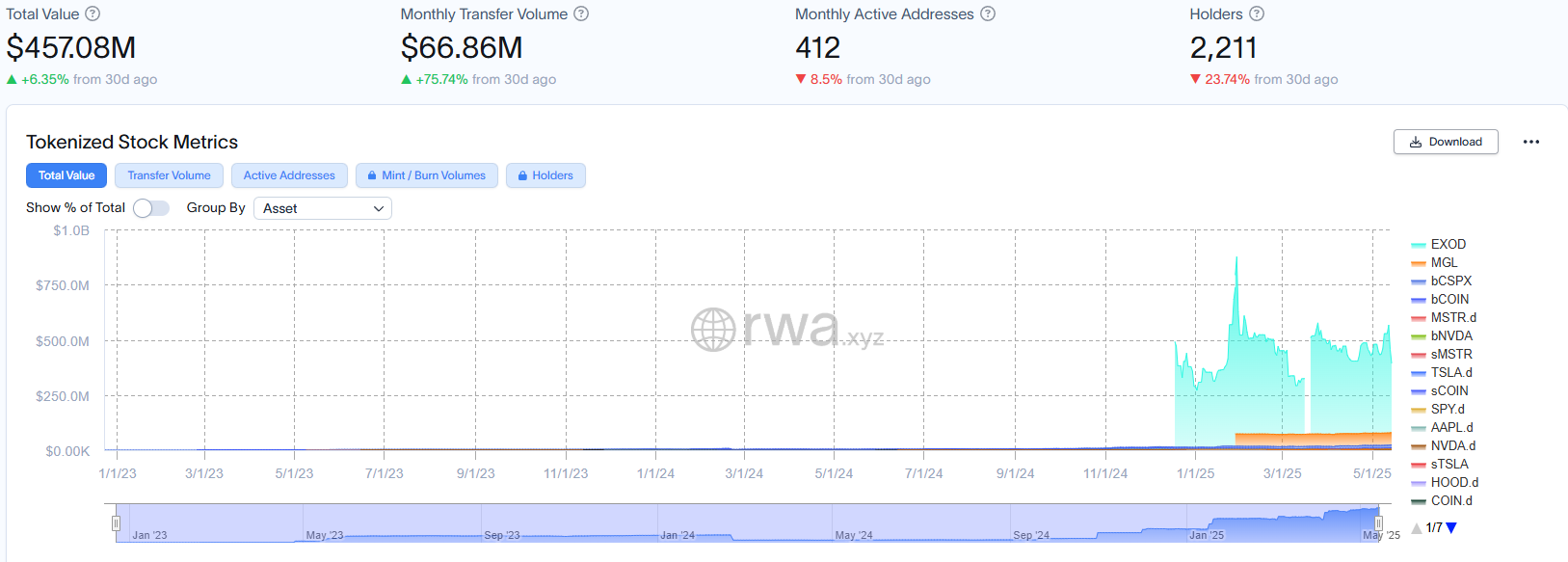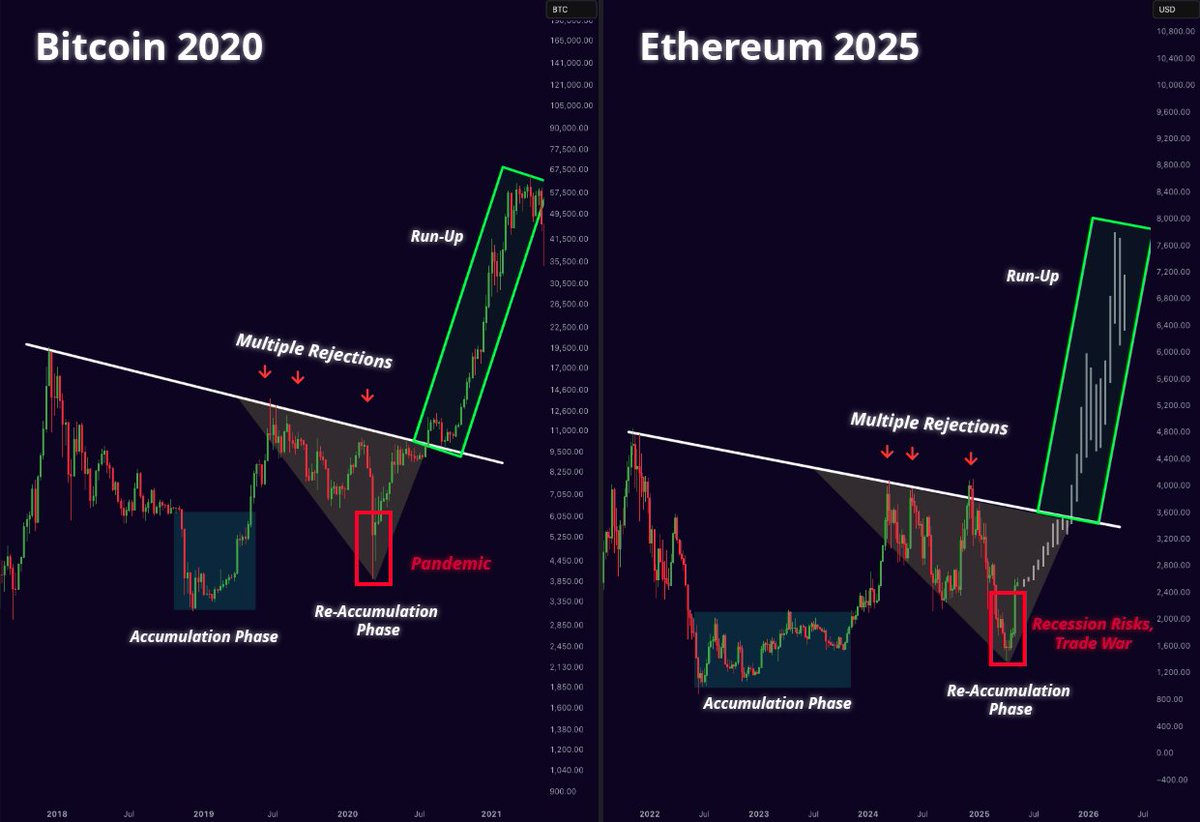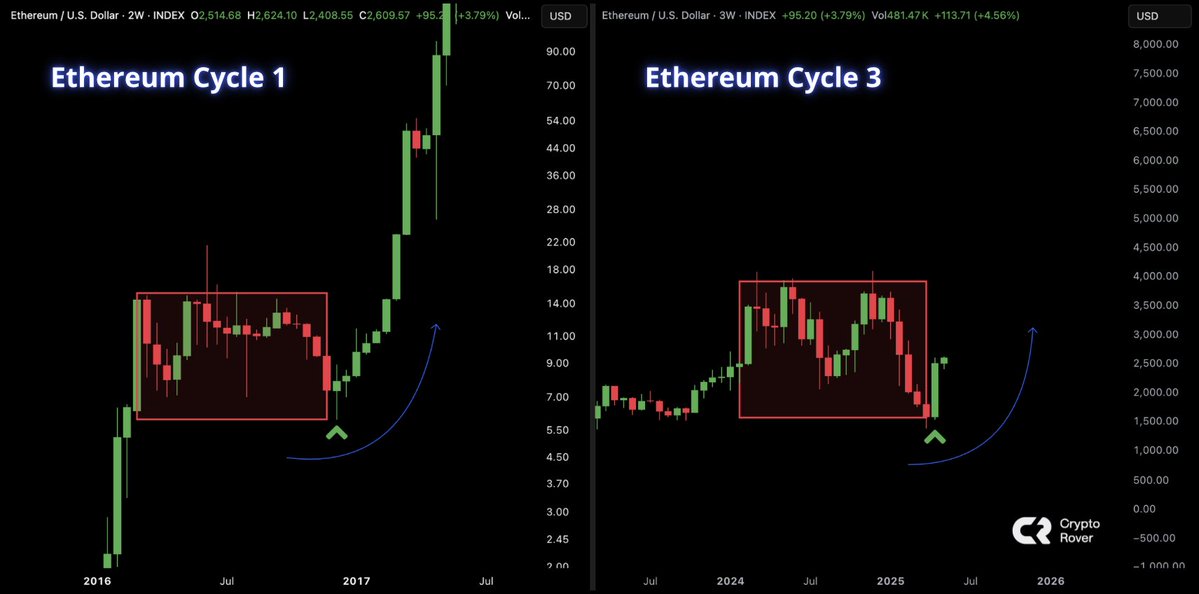
Last Ethereum update called Pectra was launched on May 7, potentially making it the fastest and cheapest blockchain in its history. The ETH price has risen 82% in the last 30 days (also due to several macroeconomic factors). It is evident that investors are enthusiastic about the update as new features have been introduced. In particular, it supports biometric authentication, gas payments can be initiated by one of the parties to the transaction, spending limits can be set on wallets, batch processing of transactions, payment for gas in different tokens, and much more. Thanks to Pectra, Ethereum now has features that other blockchains simply don’t have. All of this seems to signal positive changes. But…
Old and new trend: tokenized securities
It will take some time for the Pectra update to have a significant impact on the Ethereum price. This first launch is only the first phase of two; the second phase is scheduled for late 2025 or early 2026. So, the ETH price still has plenty of time to grow.
The price is also influenced by the adoption among institutional investors who are looking to use it to track and trade real-world assets (RWAs) using the blockchain. Tokenization of stocks and other securities is also gaining popularity.
The tokenization of stocks and other securities offers many advantages, including access to round-the-clock trading platforms, inexpensive access to the assets of clients located outside the United States. Tokenized assets can be integrated into the wider DeFi ecosystem, and the ability to use stablecoins.
As early as 2017, attempts to promote STOs (securities token offerings) have already begun. STO is a fundraising mechanism in the crypto space that essentially digitizes and tokenizes traditional financial securities by placing them on the blockchain. Before the advent of STO, the main method of raising funds were ICOs (initial coin offerings). The popularity of ICOs was also due to the convenience of Ethereum smart contracts. However, this method was later rejected due to many frauds.
Shares of American companies with high dividends regularly pay out profits to shareholders. If these stocks are tokenized, they can be used in decentralized financial protocols (DeFi). DeFi protocols such as Ethena on the Ethereum blockchain provide users with a constant source of income, but are now having difficulty finding reliable sources of profit as yields within the blockchain are declining. Therefore, tokenized dividend stocks may become a better source of income for such platforms.
This niche is just beginning to develop. According to RWA.xyz, the total volume of RWA shares issued reached $457 million. However, $377 million (94%) of this volume is accounted for by a single asset: EXOD, tokenized shares issued by Exodus Movement, Inc.
Also, on February 6, 2025, Ondo Finance announced an initiative covering both Ondo Chain and Ondo Global Markets. Tokenized shares will be positioned as the main asset class of Ondo Global Markets. Also in May, JPMorgan Chase announced that it had completed the first public chain transaction using Chainlink and Ondo Finance, purchasing a tokenized treasury bond listed on ONDO’s public ledger through a private chain account and using cross-chain payments using Chainlink.
If the updated Ethereum turns out to be convenient for securities tokenization, the number of such projects will start to increase.
Risks are still high
However, analysts say that the cost and speed of transaction processing has not changed since the launch of Pectra. Competitors such as Solana are still ahead of Ethereum in these respects. However, Ethereum’s feature set is much larger, which will potentially increase the number of new projects.
Some traders have already compare the situation around Ethereum this year with Bitcoin in 2020. Back then, the price of the latter jumped several times.
Other see pattern of 2017 and also talk about a breakthrough that is about to come.
But this is about the long term. In short — Bamboo, Pandai founder and Pandastic CEO Ferit Birkan Devletoglu believesThe analysis shows that the ETH price is between strong resistance and support. The current value is $2,556, and there are two scenarios: either the price will drop to $2,200 or continue to grow.
He wrote that if ETH drops below $2,584 and fails to rise above $2,677 again, the next level will be around $2,201. If the pressure from sellers is strong, the price could even drop to $1,978. Otherwise, buyers may push the price up to $2,800 and beyond. So far, the market situation is mostly indicative of the first scenario.
Ethereum’s (ETH) behavior is reminiscent of the rapid growth of 2017. But short-term technical signals suggest that caution should be exercised:
- The Relative Strength Index (RSI) indicates that an asset is overbought, meaning that the price may temporarily drop.
- Moving Average Convergence Divergence (MACD) indicates the risk of correction.
- There have also been many liquidations of traders recently, and now they are in no hurry to reinvest.
However:
- Large players (funds, institutional investors) continue to buy ETH.
- The inflow of funds into ETFs provides stability.
- The mood on social media is still bullish.
- The number of new wallets and activity in the ecosystem is increasing.





Spelling error report
The following text will be sent to our editors: